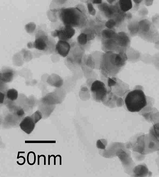The effects of manganese doping on UVA absorption and free radical generation of micronised titanium dioxide and its consequences for the photostability of UVA absorbing organic sunscreen components
Abstract
The effect of manganese doping on the free radical generation rate, free radical scavenging and UVA absorption properties of micronised sunscreen grade titania has been studied with respect to enhancement of the UVA photostability of test sunscreen formulations containing the organic UVA absorber Parsol®1789. Manganese doping has been shown to increase the UVA ∶ UVB absorption ratio of titania, reduce free radical generation rates by over 90%, and provide free radical scavenging behaviour. Adding manganese-doped titania to a test formulation incorporating Parsol®1789 shows that manganese doping increases UVA attenuation stability by up to 3 times the amount achieved by comparable commercial undoped titania materials.


 Please wait while we load your content...
Please wait while we load your content...